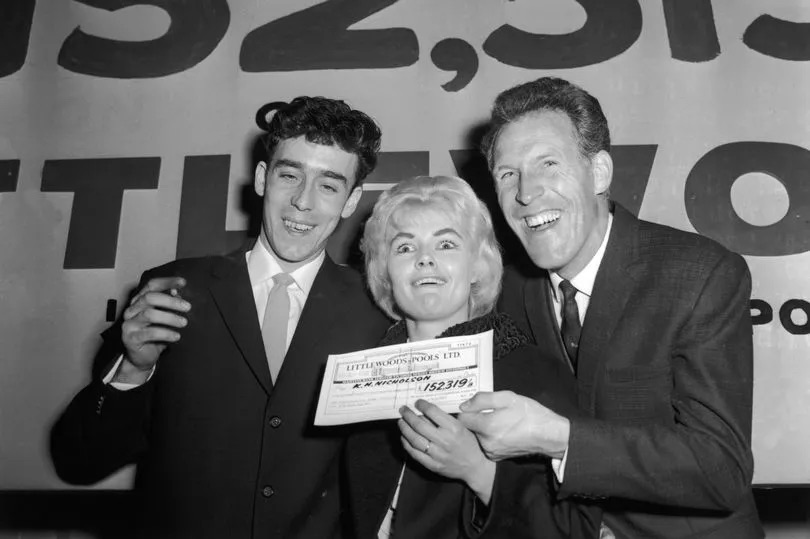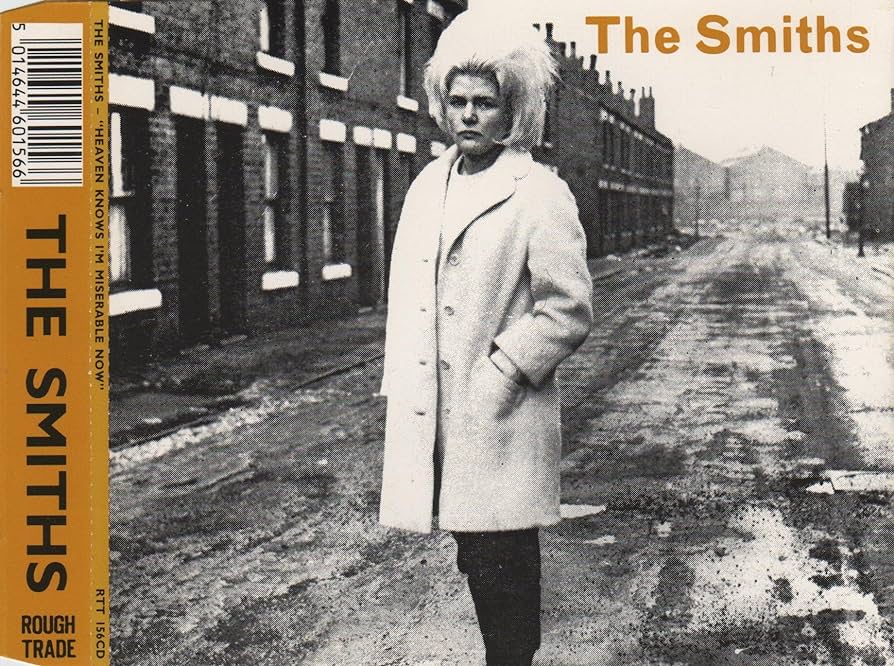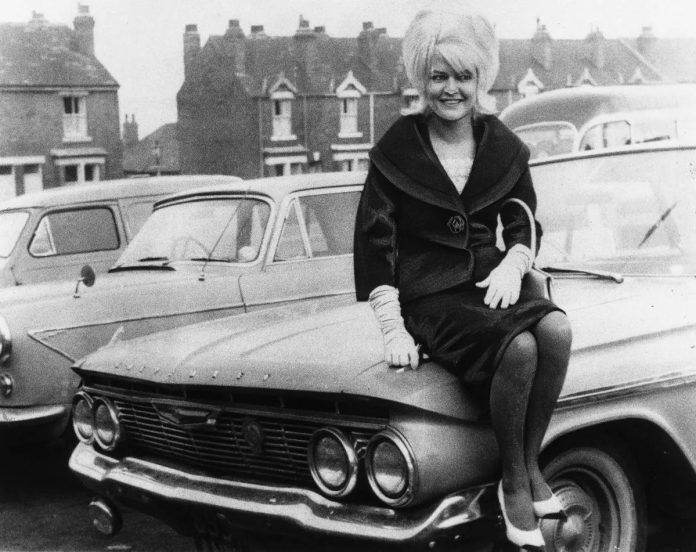Viv Nicholson’s story is one of extreme highs and devastating lows, a tale of dreams realised and then cruelly unravelled. It is a tragedy played out in the public eye, a cautionary tale that has become a part of British folklore. Her name remains synonymous with reckless indulgence and the fleeting nature of good fortune.
In 1961, Viv Nicholson, a 25-year-old working-class mother from Castleford in Yorkshire, shot to fame after a monumental win on the football pools. Alongside her husband, Keith, Viv claimed a staggering £152,319; a sum equivalent to several million pounds today. At the time, such an amount was almost unfathomable for people of their social standing. Keith worked as a miner, and Viv was a young mother juggling household responsibilities. Their modest life was suddenly upended by the promise of unthinkable wealth, catapulting them into a world for which they were ill-prepared.

Photographed with Bruce Forsyth
The pools were a phenomenon of the mid-20th century in Britain. Week after week, families would anxiously await the results, hoping for a life-changing win. It was a game of chance, reliant on predicting football results. For the Nicholsons, the win came as a lightning bolt. Their scorecard was perfection itself, and their numbers aligned to deliver what seemed like a golden ticket to a better life.
When asked by reporters what she planned to do with the money, Viv’s response became legendary: “Spend, spend, spend!” It was a declaration of liberation, a vow to enjoy life with an abandon that was electrifying and infectious. The public embraced her exuberance, and her catchphrase became a shorthand for the heady rush of newfound wealth. Yet those three words would come to haunt her, epitomising the recklessness that would lead to her downfall.
Viv and Keith embarked on a spree of extravagant spending that defied comprehension. They purchased a new house, filled it with lavish furnishings, and acquired a fleet of luxury cars, including a pink Cadillac that became a symbol of their newfound status. They showered their children with toys and clothes, and their lives became a whirlwind of shopping trips, nights out, and spontaneous gestures of excess. Viv embraced the glamour of her wealth, often dressed in the latest fashions, her beehive hairdo and bright dresses becoming part of her public persona.
However, this newfound lifestyle came with a price. The Nicholsons had little understanding of financial management. Tax bills mounted as the Inland Revenue took an interest in their windfall. Their spending outpaced their income, and their lack of restraint exacerbated their predicament. While the money seemed inexhaustible at first, the reality of its limits began to loom ominously.
Keith and Viv’s relationship, which had once been a close partnership, began to show signs of strain. Their lives, now lived in the glare of public attention, were no longer their own. Their wealth, rather than uniting them, brought with it a host of pressures. Keith, who had grown up with the values of hard work and frugality, struggled with the implications of their extravagance. Viv, on the other hand, seemed determined to hold fast to her vow of spending, often leading to conflict.
In 1965, tragedy struck. Keith was killed in a car crash, a devastating blow that marked the beginning of Viv’s descent. Widowed at just 29, Viv was left to navigate the consequences of their financial choices alone. The fortune that had once seemed endless was rapidly dwindling. Keith’s death left her bereft not only of a partner but also of the stability he had provided, however tenuous it might have been.
Viv’s spending continued unabated, even as the funds dwindled to nothing. The extravagant lifestyle that had defined their post-win years was unsustainable, and by the late 1960s, Viv was bankrupt. Her pink Cadillac, once a symbol of her dreams, was repossessed, and the glamorous life she had constructed collapsed around her.
Without money, Viv found herself back where she had started, living in relative poverty but now carrying the burden of public notoriety. The British press, which had once celebrated her as a symbol of working-class aspiration, turned against her. Her downfall became fodder for tabloid headlines, and she was mocked as the poster child for financial irresponsibility. The public that had once admired her seemed to take a perverse satisfaction in her struggles, as if her tragedy validated their own scepticism about sudden wealth.
Viv’s life after bankruptcy was marked by further personal and professional difficulties. She remarried several times, but none of her relationships provided the solace or stability she sought. Her struggles with mental health and alcohol dependency became increasingly public, adding to her notoriety. She tried to rebuild her life, taking on various jobs and even attempting to capitalise on her fame with a memoir titled Spend, Spend, Spend! published in 1977. The book was candid about her experiences, offering a raw and unflinching account of the joys and sorrows of her life. It became the basis for a West End musical in the late 1990s, which brought her story to a new generation.
Despite these efforts, Viv’s financial situation remained precarious, and she spent much of her later life in modest circumstances. The exuberance that had defined her youth gave way to a quieter resilience, though her struggles left an indelible mark. By the time of her death in 2015, at the age of 79, Viv Nicholson had become a symbol of the pitfalls of sudden wealth, a reminder of the complexities of fortune and the ways it can unravel lives.
Viv’s story resonates because it touches on universal themes: the lure of wealth, the fragility of happiness, and the ways in which social and economic circumstances shape our lives. Her tragedy was not just a personal one but also a cultural one, reflecting the tensions of post-war Britain. In a society still grappling with class divisions and the promises of social mobility, Viv’s rise and fall became a parable for the dangers of excess and the fleeting nature of opportunity.
In many ways, Viv Nicholson was a victim of her times. The 1960s were an era of rapid social change, when traditional values were being challenged and the promise of a better life seemed within reach for many. Viv embodied the spirit of the age with her defiant embrace of freedom and pleasure. Yet her story also revealed the limitations of that promise, the ways in which structural inequalities and cultural attitudes could undermine even the most spectacular windfalls.
Her life has often been framed as a cautionary tale, a reminder of the perils of sudden wealth and the importance of financial prudence. But it is also a story of resilience and survival. Despite the many hardships she faced, Viv retained a certain defiance, a refusal to be entirely beaten by her circumstances. She lived a life that was messy and complicated, full of contradictions and extremes. In the end, she was more than the sum of her tragedies; she was a woman who, for better or worse, lived life on her own terms.
Viv Nicholson’s legacy endures as a cultural touchstone, her story a reminder of the precariousness of fortune and the resilience of the human spirit. Her tragic trajectory, from the heights of wealth to the depths of despair, continues to captivate and caution, a poignant testament to the complexity of life and the often cruel unpredictability of fate.
A photograph of Nicholson was used on the sleeve of the Smiths’ 1984 single “Heaven Knows I’m Miserable Now.”








